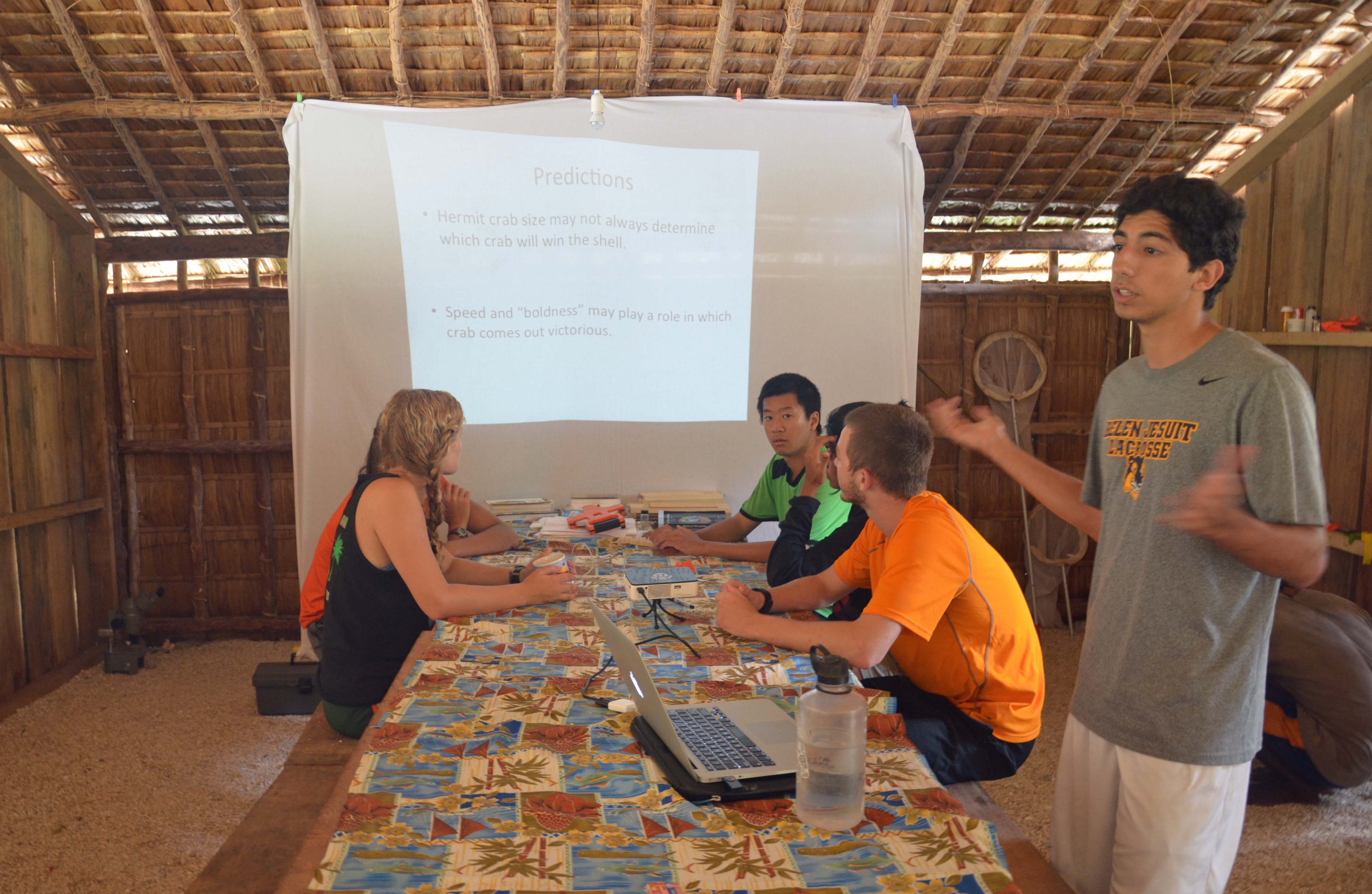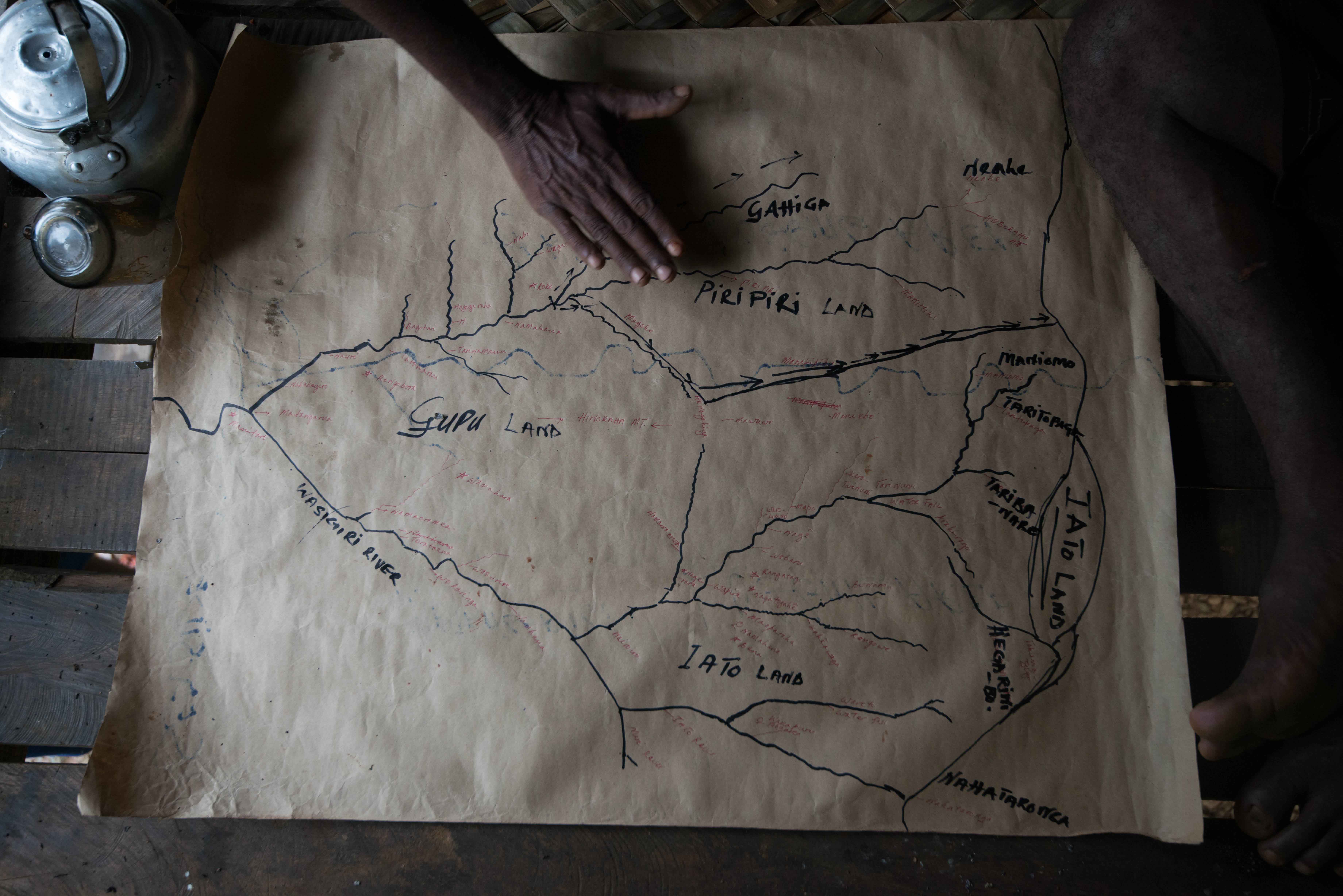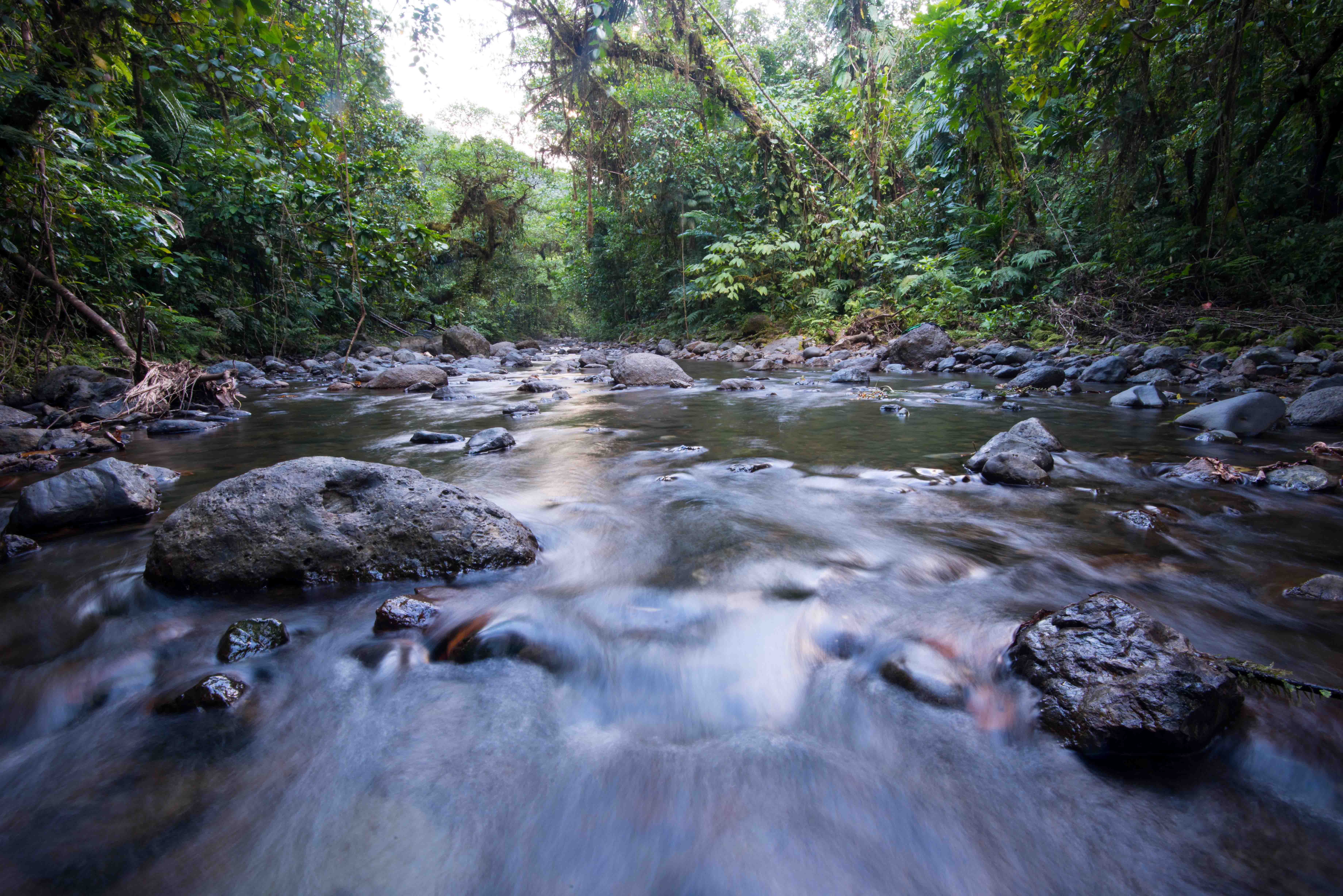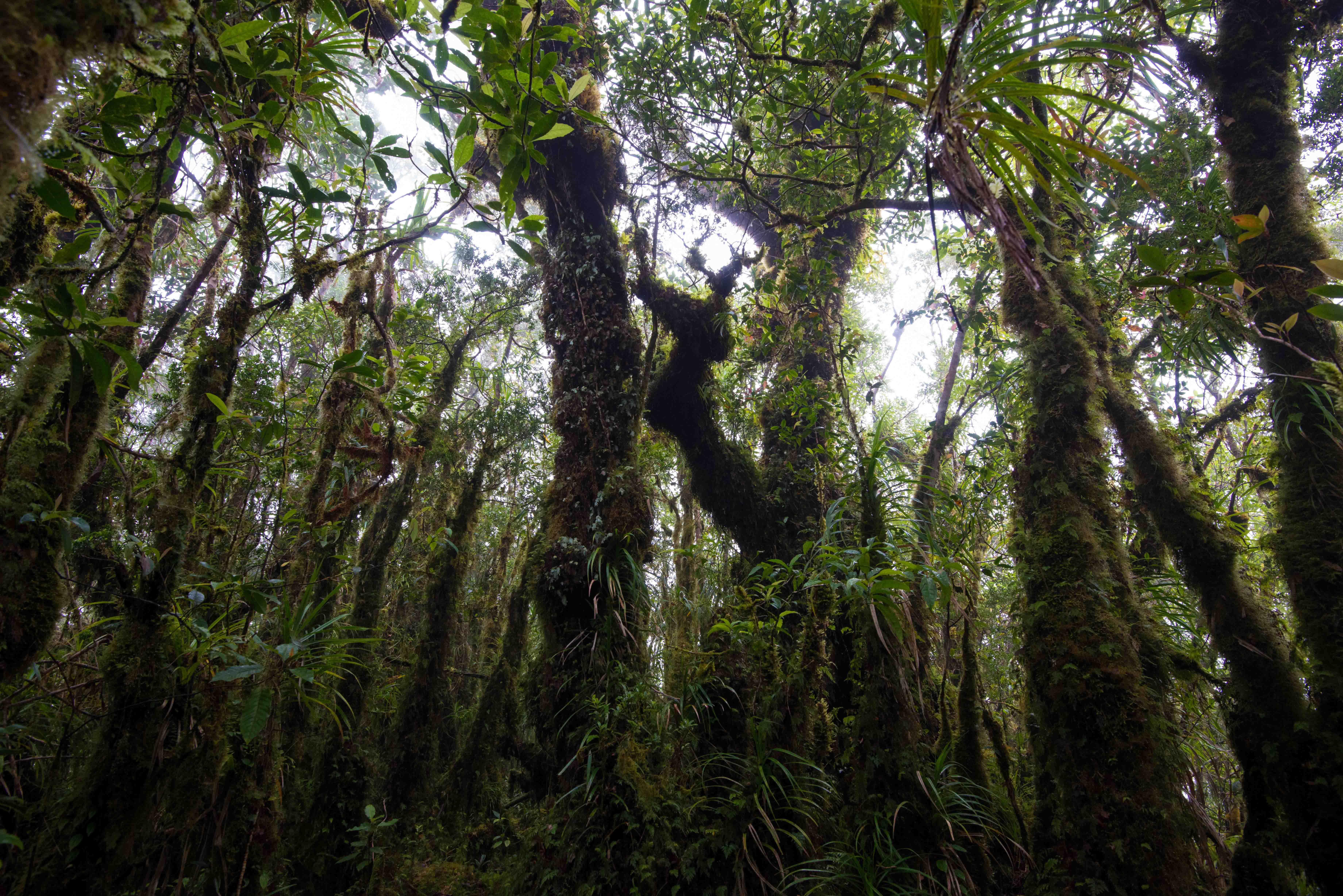
| |
| Home |
| Research |
| Publications |
| People |
| Teaching |
| Field Course |
| Conservation |
| Outreach |
| Adventures |
| Opportunities for students |
| Contact |
CONSERVATION |
Melanesia, which includes the island of New Guinea and several archipelagos in the
South Pacific, harbors one of the greatest region of intact lowland rainforest on earth.
Unfortunately, commercial, clear-cut logging is threatening this region. For
instance, between 1990-2005, over 20% of the rainforest in the Solomon
Islands have been lost to logging. With such imminent danger, we are building on our
research goals in the Solomon Islands as platforms for educational and conservation programs. |
Various organizations like Conservation International and World Wildlife Fund have initiated programs to conserve important islands or regions throughout the archipelago. To complement these large scale projects and approaches, we have initiated grass-roots programs in the Makira Province. Our approach is four-fold. I. TRAINING First, we involve local, young community stakeholders in our research. This provides hands-on training, such as mist netting and diversity survey techniques, to local land stewards (see picture below).
George looks on, as Al trains his local collaborators on banding and taking morphological measurements (photo by Day's Edge Productions). II. OUTREACH Second, we give presentations to local schools and to local elders (see picture below). These presentations provide key information that forms the basis of successful long-term conservation initiatives. For instance, our work indicates that several island chains harbor unique endemic and newly-formed bird species, and we use this information to help local landowners realize that their flora and fauna are unique. We also provide them with a more global perspective, explicitly communicating the value of their resources to a global economy and the impacts of global warming to islands. |
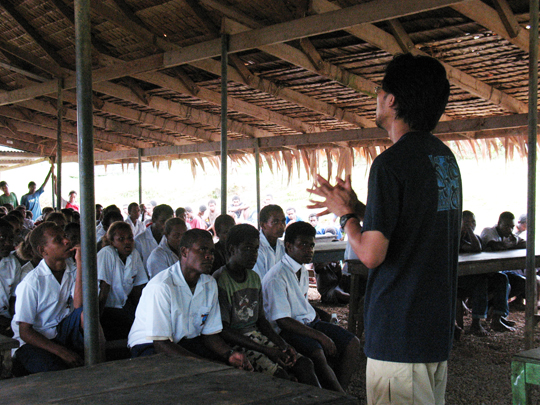 |
| Al giving a presentation on sceince and conservation to high school students in Pawa Secondary School, Ugi Island. |
III. EDUCATION Third, with support from the National Science Foundation, we have developed a field course that brings students from the United States to the Solomon Islands. This course will expose students to basic ecological and evolutionary theory, as well as explicit training in field research techniques and development of outreach programs. This course provides substantial revenue to local communities. Further, we have plans to expand this course to include students from the Solomon Islands National University, thereby training future leaders of the Solomon Islands. |
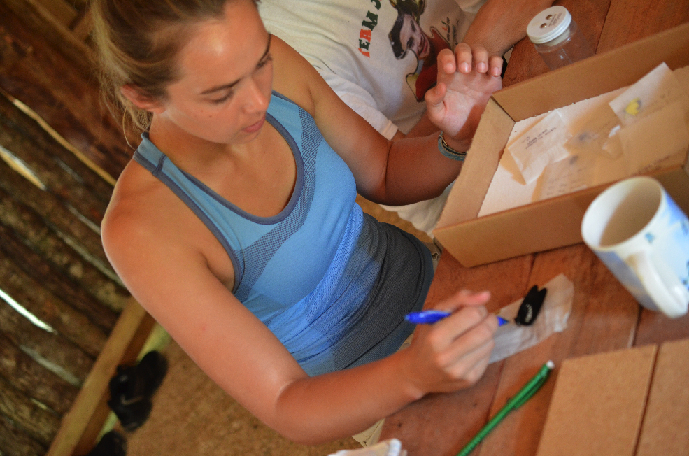 |
| UM student, Chrsitne DeSilva, learns how to identify and mount butterflies during a Study Abroad course held at the Nafinua Resaerch Station in Makira, Solomon Islands (Summer 2013). |
UM student, Gilbert Serein, presents the results of his independent project to the class during a Study Abroad course held at the Nafinua Resaerch Station in Makira, Solomon Islands (Summer 2015). |
IV. CAPACITY BUILDING AND EMPOWERMENT Finally, as a direct avenue to empower indigenous communities, we are helping our local partners develop alternative and more ecologically-friendly ways of earning money. For example, in Makira Province where clear-cut logging is a major threat, we have partnered with three communities to establish a protected or conservation area. The proposed area is over 40,000 acres, consisting of cloud forest, primary and secondary rainforests, and mangroves. The work is funded by Conservation International's Critical Ecosystems Partnership Fund, and is in collaboration with Ecological Solutions Solomon Islands.
|
| A custom map of the proposed conservation area in Makira (photo by John Mittermeier). |
A pristine river within the proposed conservation area (photo by John Mittermeier) |
High montane, cloud forest within the proposed conservation area (photo by John Mittermeier). |
In general, we hope that these grass-roots approaches will provide a partial but long-term solution to the threats of unsustainable practices and anticipated rise in sea levels driven by global warming.
|

